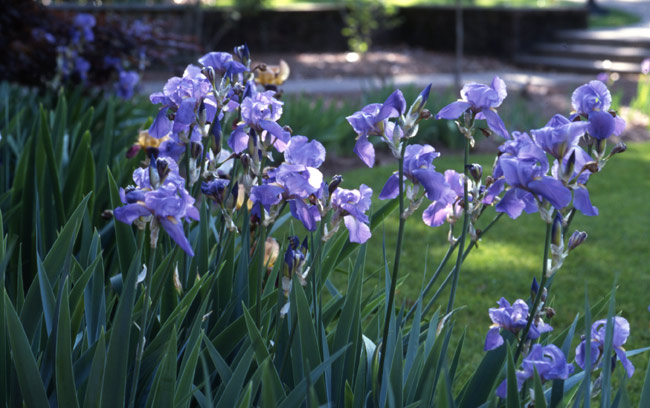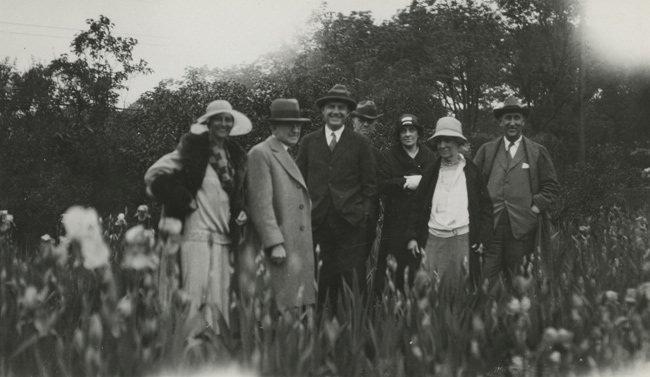
An exhibit on the history of irises at Vanderbilt University and Peabody College is on display at Vanderbilt University’s Special Collections through July 2019.
In the first half of the 20th century, four irises from Nashville hybridizers won the American Dykes Memorial Medal, the highest award given to an iris. The gardeners were members of the Nashville Iris Association, a group of irisarians formed in 1931 around their love of the flower. Due to their efforts, the iris was named the state flower by the Tennessee Legislature in 1933.
The names of these irises, “Dauntless,” “Mary Geddes,” “Copper Lustre” and “Chivalry,” still ring out in the iris world, as do the names of their hybridizers in the history of Vanderbilt.
Clarence Phillips Connell, superintendent of Vanderbilt University Hospital and secretary of its Board of Managers, introduced Dauntless, a reddish iris on a tall, heavy stem, in Nashville in 1929, winning the Dykes Medal that year.
Mrs. Edward Claiborne Stahlman, mother of Nashville Banner publisher James Geddes Stahlman, a Vanderbilt alumnus, donor and Board of Trust member (1930-1976), and T.A. Washington, who raised the seedling, submitted Mary Geddes, a tall bearded salmon/orange iris in 1931, which won the Dykes Medal in 1936.
James Hampton Kirkland, Vanderbilt University chancellor from 1893 to 1937, hybridized Copper Luster, a copper-colored iris with an orange beard, in 1931, winning the Dykes Medal in 1938.
Jesse Ely Wills, a member of the poetry group known as The Fugitives and Vanderbilt Board of Trust chairman, introduced Chivalry in 1943, a slightly ruffled blue iris that won the Dykes Medal in 1947.

These cultivars will soon begin to bloom around the Vanderbilt campus, thanks in large part to the Vanderbilt Garden Club for Campus Beautification, which re-established the presence of these irises on the campus beginning in 1997. Objects, records and memorabilia from the Vanderbilt Garden Club are on display in the exhibit, highlighting the work of the garden club in its historic iris project to identify, purchase and plant these old varieties.
The exhibit also showcases the place of honor that the iris has at Peabody College. In the first 50 years of the 20th century, Peabody President Bruce Ryburn Payne and groundskeeper Roy Appleton landscaped the classically designed campus, where hundreds of irises were planted, many of them donated by faculty, friends and neighbors. A time-honored tradition for many years was the gift of an iris rhizome, dug from the Peabody garden beds, to each graduate of Peabody College.
For more information about the exhibit, contact Molly Dohrmann.